Transcript: ON ETHICS
You can listen here: Link to simple landing page: here
https://share.transistor.fm/s/eac9ae9c
John and Ajay Rastogi at Majkhali Village, Uttarakhand, India.
Recorded 27.10.2019
———————————————
Tanya:
Welcome to Nordic By Nature, a podcast on ecology today inspired by the Norwegian Philosopher Arne Naess, who coined the term Deep Ecology.
In this episode ON ETHICS, Ajay Rastogi at the Foundation for the Contemplation of Nature in Uttarakhand, India, invites Dr. John Hausdoerffer, from Western Colorado University in Gunnison, USA, to speak about what constitutes Ethics today.
Both Ajay and Dr John, as his students call him, are part of an growing movement that calls for a new kind of ethics that views all places as part of our home, all generations and beings as part of our scope of responsibility, and all actions as potential expressions of human care for the world.
Dr. John and Ajay were at the Foundation’s HQ, the Vrikshalaya centre, in Majkhali village, at the foothills of the Himalayas, at the time of this recording. Every year Dr. John and Ajay lead students on an experiential Mountain Resilience Course, that is part of a longer-term Sister Cities program between Gunnison and Majkhali.
The long-term aim of the partnership is to share climate change solutions between the two Mountain Communities, and co-create a project based transformative Masters’ degree course that is both transferable and scalable.
I hope you can find time to relax and enjoy listening.
Intro
Ajay: Hi, my name is Ajay Rastogi, and I’m joining in from Uttrakhand State of Central Himalaya. It’s a very beautiful afternoon. We have the majestic mountain views in the front, and I’m happy to have this conversation.
John: My name’s John Hausdorffer. I’m the dean of the School of Environment and Sustainability at Western Colorado University, and the founder of the Mountain Resilience Coalition, co-founder, and co-founder of the Resilience Studies Coalition, and a humble and honoured friend of Ajay Rastogi’s through our Sister City partnership between Gunnison, Colorado and Majkhali, India.
What are ethics?
John: For me, the ethics is different from morals. Morals or notions of right and wrong that we received from society, from elders, from family, from law, from religion, from popular culture, literature, philosophy, external claims about right and wrong. And ethics is our capacity to question, analyse, evaluate those moral claims as to whether or not we want to live our lives based on them or unsettle them and create new visions of how to live.
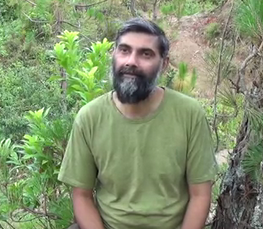
In an outer sense ethics is about how do we know what’s good for the world beyond what’s good for me. How do we measure right and wrong beyond what’s right for me? How do we understand what brings good to any being, system or community with its own value? Whether it’s human or more than human? And how to extend our own value out into the world. But it’s also about internal resilience; What is the good life? And to me, these questions of the climate crisis, questions of social justice movements, questions of deep ecology, re-enliven in very ancient questions.
What does it mean to live a good life when seen from the point of view of social and ecological systems that sustain us from which we evolved? Of which we are a part? It’s really about the good life and re-asking old questions like “What is the world? Who are we? How are we to live?” with frameworks that come from a global consciousness about anything from our economy to the climate crisis.
And so, again, ethics is simple. It’s our ability to analyse moral claims, but it’s become really complex. Now that those moral claims involve things about ‘How driving to the corner store to get a gallon of milk might affect farmers on the other side of the world.’ These old questions are much more complicated now, as complicated as they were before.
SOUND: BELL
Ajay: The issues are far more complex. As Dr. John Hausdoerffer often has mentioned, and this whole thing of that we carried on for several decades about north south are temperate and tropics. It seems that this North-South divide is no more a clear cut north south divide, because there is a south in the north and there is a north in the south.
Every community seems legs to be fractured. And fractured so much that we have a highly multicultural societies that are evolving, multi class societies that are evolving, and to address these concerns of social equity above all, access. Access to basic amenities. On the one hand, we are seeing that the world is being destroyed.
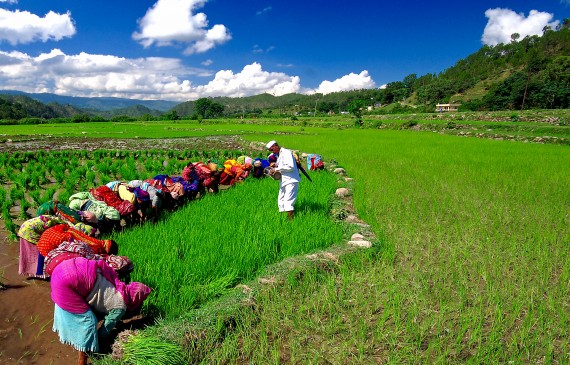
The biological diversity is being destroyed. The oceans are being destroyed. And on the other hand, we feel that there is a crisis of development because there is not enough water for the people. There is not enough food for the communities. So, this looks like a highly complex scenario where it cannot be just dealt with by technological solutions.
We need a certain kind of a transformation, maybe a radical change in the way we look around. I think within societies, the notions of development therefore need to be challenged.
If so few people with their affluence can destroy 90 percent of the resources of the world, or consume 90 percent of the resources of the world, how do we learn resilience to the entire society so that there is more equity and there is more ecological security? It is not just about outer resilience, but there is those of us who are privileged to have the resources. It’s also about our inner resilience to be able to share with others.
On the middle-class desire for ‘Greatness’
John: If we reduce the climate crisis to carbon emissions, we reduce climate actions to technological strategies for shrinking carbon emissions, we lose out an opportunity for growth in ourselves. And what I mean by that is that. When you look at the emergence of ecological science in the 20th century, or you look back thousands, ten, thousands of years, a traditional ecological knowledge both come with an evolution of perceiving the complexity of living systems in the human place in them and an expansion of our capacity to care for that complexity.
And I worry that when we reduce ecological problems, social ecological problems, either natural resource, quantity or tons of carbon in the atmosphere, we lose out on the opportunity for inner growth, for expanding our capacity to perceive of, and care for complexity in a new way.
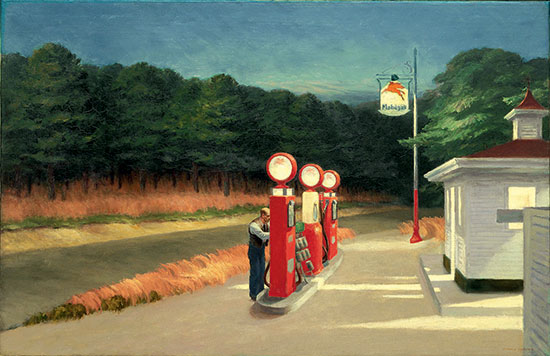
It’s really about the growth of the human spirit that I’m worried about as much as I’m worried about deforestation and loss of snowpack, I’m worried about, the commodification of the human capacity to care through just seeing the value of the natural world is quantifiable resources, reducing our role in the world to doing less bad rather than our role in the world as loving, perceptive beings.
I think that the moment we’re in is a great opportunity to work across cultures, to grow that capacity to care, and if we just frame it around carbon emission reduction by 2050 we’ve lost the deep ecology moment that we’re in.
Arne Naess reminded us to make a distinction between bigness and greatness, and I would also ask us to make the distinction between smartness and greatness. It’s nice to humble ourselves and to — think of the language here –shrink our carbon footprint, Reduce, Reuse, Recycle, Leave no trace.
But at least speaking for middle class Americans, we’re not inspired by making ourselves smaller. We want that greatness that Naess was talking about, but greatness doesn’t need to mean bigness in terms of our global impact.
Greatness can be around a great capacity to care for each other, a great understanding of ecological complexity. A great and compassionate global community.
And the alternative to big is not just shrinking ourselves. Ajay was sharing with my students the story of Lakshmi, who represents eight kinds of wealth. Ajay? So we think about richness in so many ways. You know, there’s all these kinds of richness. We’re looking at together; social capital, human capital, cultural capital, intellectual capital, natural Capital.
SOUND: BELL
A new context for old questions
John: One of the things we were talking about yesterday, Ajay and I, looking out at the Himalayas was how some of these questions that are emerging from the climate crisis and emerging from global equity and poverty are old questions. And what we were asking the students is that, you know, are they comforted by the fact that these are old questions or are they disheartened by the fact that these are old questions?
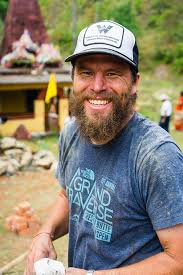
There is a concern that lack of inner resilience, that whole inside of us driving a kind of external greed that will destabilise us inside, but also create injustice in the world on the outside.
That relationship to an inner and outer resilience is what Jay and I have been talking about with our students is at the core of ethics. How does an outer resilience movement like, for example, sustainable agriculture or water conservation or renewable energy, stem from and how is this sustained by a kind of inner resilience?
And how does our inner being find fulfilment and satisfaction from those outer resilience efforts? If those two aren’t merged…. I know plenty of American organic farmers or environmental non-profit workers who got burned out.
Enviro-non-profits have a high turnover rate and so they may be doing out resilience work with their collapsing for lack of inner resilience.
We’re trying to find that sweet spot as the core of ethics in the Anthropocene.
SOUND: BELL
What is resilience?
John: So resilience, I hesitate to offer a simple definition because resilience emerges from so many cultures and time periods. But in the Western scientific discourse, it really starts with, in my view, Aldo Leopold, the American conservationist who did not even use the word resilience, but when he talked about the health of land, he talked about the capacity for self-renewal. And that gets at the core of resilience. Resilience is the ability to adapt to shock or disturbance.
Before ecology we’ve seen that word used in psychology, how people respond to trauma, whether they grow from that healing or collapse from it. But in ecology, it really emerged from Buzz Holling in 1973. And he really shook up ecology and the sciences and talking about the capacity to persist, because for him it was no longer about nature’s equilibrium. It’s no longer about how an ecosystem reaches a sort of climax community status and then has natural balance.
For him there is this adaptive cycle that requires disturbance. And so suddenly resilience is about the capacity for a system to absorb and adapt to disturbance, to thrive on the other side of that disturbance. So, thinking about a low intensity forest fire clearing out excess of dead and living trees to allow for the understory and the forest to thrive in the habitat to thrive.
By the 21st century, we have Brian Walker and David Salt taking Hollings’ notion of the importance of disturbance. And they’re actually now using that phrasing in a definition. They’re saying resilience is the capacity of a system to absorb disturbance.
But the real turning point has been in the last decade. I think there’s been a revolution how we think about resilience. An essay by Carl Folke, 2010. He talked about the capacity to create a fundamentally new system. Now, Carl Folke, talking about transformational change is the definition of resilience. So, resilience is now the capacity to create a fundamentally new system, literally transforming our political systems around capping carbon or a carbon tax or disrupting campaign finance, so that oil and gas companies no longer have so much power.
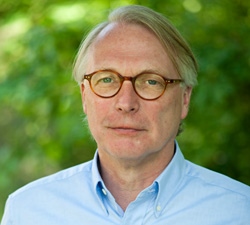
It’s about building awareness into our citizenry. And really what he says, here is a quote from me says, “Transformational change often involves shifts in perception and meaning, social network configurations, patterns of it, of interactions among actors, including leadership and political and power relationships” Right? So suddenly resilience is about activist democratic co-creation of economics, social, political, environmental justice.
I was lucky enough to talk with Vandana Shiva in 2018 about this. I just asked her point blank. What’s your definition of resilience? And she said, “Dealing with illusions is the resilience of our time.”
So think about that arc, you know, from Leopold’s capacity for self-renewal to Buzz Hollin bringing disturbance into how we understand ecological systems, to Folke talking for transformational change, to Vandana Shiva just saying resilience is just whether or not we can deal with illusions.
And I think those illusions are outer and inner. The illusions can be the way in which companies have spent billions of dollars to get people to doubt scientists, but illusions can also be internal. The illusion of the separate, individualistic self being fulfilled by consumption. That illusion is also driving resilience, the illusion that we’re not part of one global community together, we’re in competition with each other.
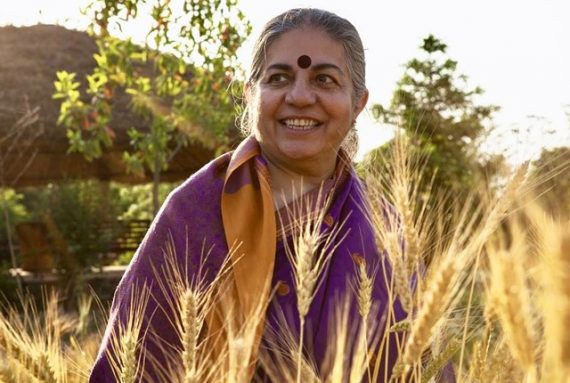
SOUND: BELL.
How can outer resilience drive inner resilience?
How do we become renewed when we work together to renew the world that’s inner and outer resilience? The second layer, though, is going back to Arne Ness when he talks about realisation. Already using realise in a double way, you know, he’s first we’re first intellectually realising, like Eureka, my self is bigger than just my mind. My self extends out into the river that he protested through chaining himself to a dam. Right that was part of his larger self. He realised that intellectually, from saying, OK, collagen interconnects, everything physically, why wouldn’t it interconnect the self with the world?
But I think realisation for him is also about you make something real. So, you realise your full potential of yourself through intellectually realising it is the world, but also through fighting for the realisation of a free-flowing river. You are realising your own self-actualisation, but also the liberation of your larger self.
Self-realisation again, there is an inner and outer resilience coming together. Ani ness chaining herself to a dam right as a way of realising his self-actualising potential. I mean, just last week in United States, the actors Ted Danson and Jane Fonda; He’s 71. She’s 81, they were handcuffed and arrested for protesting climate change.
Sitcom prime time actor Ted Danson said “Being handcuffed focussed me.” Now, think of that. It’s an outer action to push fellow citizens to take on climate change. But what do they say there? “It focussed me.” So how will he be energised from that focus. It’s almost like Thoreau saying: “The jail cell in a slave society is the only place for a free man,” Right? It focussed him in civil disobedience.
There’s that inner resilience.
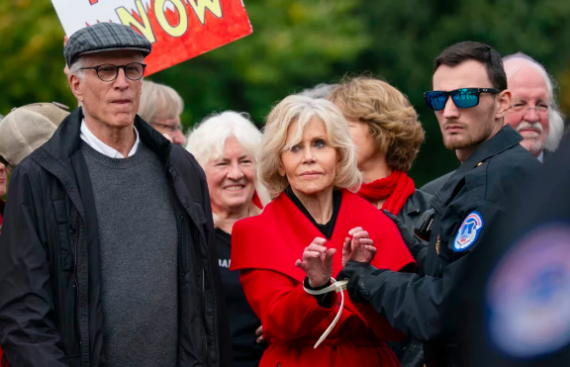
On the Mountain Resiliency Course at Majkhali Village
Ajay: So in 2016, we developed a collaboration with the Western Colorado University and a graduate student. That time, Brendan McNamara. He visited us and we in collaboration designed a course which is now called Mountain Resiliency. It’s a three-credit course.
And students have been coming for the course together with the dean, Dr. John Hall, staffer and the course is being offered in much cuddly. It’s a month-long course. We also have customised courses for different universities, which could be shorter duration anywhere between a week, ten days to two to three weeks. And the mountain resiliency module is getting quite an attention, in terms of how much transformation it can bring about in the students.
This is a course which started with this thinking of place-based learning and place-based learning based on those three pillars of dignity, of physical work, interdependence and interconnectedness.
But we are encouraging students to think and to interact with people in the community who understand more about those themes.
So, for example, one theme in the mountain resilience course place-based learning is local co-operatives, which is about the five forms of capital.
How do the students understand that it’s not just the economic or the financial capital that is important, but an enterprise should build ecological capital and social capital, natural capital and human capital?
So for that, we go to a local co-operative who has been working here with 2000 women as members and we learn from them. How have been your experience of building these five forms of capital in the institution?
Similarly, another theme is lifestyle thinking. Lifestyle thinking is about the purpose that you mentioned. OK, so what is the purpose? How about happiness? What are the sources of happiness? Is it just about acquiring and consumption? Or is it about social connectedness? Is it about the meaning of how we relate to each other? Is it about trusted relationships?
About the interconnectedness? Then we think about in how many forms do we get what we need from the landscape and how do we maintain reciprocity and equilibrium with the resources that we get from nature? So, It’s also about traditional ecological knowledge, about agriculture, about forestry use, about livestock, etc..
Now, water is another very big issue in the mountain areas. And water also, as you know, connects right from the watershed down to the spring and to the kitchens of the people. So how do we take care of the water? What are the traditional norms of taking care of the water?
Why are the forests in the catchment of water springs sacred? How does it relate to our customs in this society? And do those customs help us in more rejuvenating water use for everyone?
So that’s how the place-based learning module has been evolving.
One very important aspect of the course is a walking journey. We have just finished in this course. It is walking journey like last time, we passed through villages. We talked to the people. We have discussions. We have circle time.
Students get to go across different kinds of village, different kinds of agriculture around the villages, different utilisation of the forests, and then they can talk to the communities. It’s also intergenerational learning because when we talk to the youth, you get a different response. When we talk to the elder, you might get a different response.
How do you reconcile the aspirations of the youth? So, I think students are able to grasp the social complexity, the ecological complexity and the cultural complexity.
It is not just about carbon. It’s a whole lot of a complex scenario that we are facing in this society. And to be able to comprehend it, to be able to contemplate what would be the possible scenarios of intervention, that is little bit about the outer resilience.
Now, if you turn it other way down, what is my responsibility? How do I accept my privileges? What do I do as a responsible citizen in this scenario? I think that is where the inner resilience also plays a big part.
Diwali and notions of wealth
The social events like for example; we are at the moment celebrating Diwali. The students are a part of those festivities in the village. What is the message that the Festival of Diwali gives? What is it? What is the concept of wealth? Because in the valley, the general notion is that we offer prayers to the goddess of wealth. And the wealth is not just about money. So, it is about liberation. It’s about food security. The wealth is also courage to be able to behave responsibly. We need courage. And courage is a kind of well, it is. Wealth is also about being able to follow the path of resilience and also how we can destroy the suffering.
So, we need to be giving up certain things and taking up certain other things to be able to make these adjustments in life.
It’s a beautiful course that students are able to experience in a different culture.
SOUND: BELL.
Sister cities
John: One of things we’ve done out of a concern that American students don’t simply swoop into a community where their guests think they can solve problems and swoop out without a proper needs assessment, without humbly co creating solutions with community leaders, is that beyond the course which lasts a month, we’ve created a sister city partnership between Gunnison City Council in Colorado and Majkhali leaders here, so that there is a continuity between each year’s course and one of the glue between each year.
Undergrad course is a graduate student living in Majkhali, keeping a mountain conversation alive when the course is not happening so that students feel like if they contribute something in Majkhali, it’s within the intellectual capital of this community and can continue beyond their presence here, knowing that they’re part of a larger self that students will come long after they’ve left.
Project based Master’s degree courses at Colorado University
Brandon MacNamara designed this with Ajay. He did it as his master’s project. And when I created the Master and Environmental Management Program at Weston, I did away with the thesis, and said the world needs these students defending theses to expand knowledge, but why do we have master’s degrees?
Why not to extend the reach of visionary but overextended organisations by requiring a yearlong project for that organisation? Five years later, we’re sending twenty-five thousand hours of these projects around the world to extend that reach for organisations, and we’ll have a thousand of those by 2035.
But they’re playful. Students don’t just get bogged down in complaining about who the US president is and what the global impact of that arrogance is. They are playfully creating solutions. We call the IMBY program instead of not in my backyard. In my backyard. What do you want to create? What do you want to grow? What kind of wealth do you want to promote? Scale it up.
Yeah, actually through the United Nations Mountain Partnership there, they’re connecting me with what they see as a similar project driven programs around the world. The Resilience Studies Consortium I’ve started is looking to find those partners. We found a beautiful one. Eberswalde, a university in Germany? We have a nice partnership with them. The first the job is to create an excellent model. We haven’t perfected what we’re doing yet. We never will.
SOUND: BELL
On Inner and Outer Resilience
I’d like to expand on inner and outer resilience. Ajay was talking about water, and one of the aspects that we share between sister city communities is water.
We both are on the edge of major mountain ranges. We both rely on snowpack, from spiritual fulfilment to economic need, to forest health, to eco tourist potential, to family traditions. And in Colorado, there’s a community, San Louis, Colorado. Someone you should interview one day is, Devon Pena, writes brilliantly about San Louis, Colorado, and what happened. There was Culebra Peal, a fourteen-thousand-foot, or four or five thousand metre peak.
The snowpack of that mountain is not necessary for a two-hundred-year-old food system in the town of San Louis. It’s Hispanos traditional farming community that uses ditches, bringing gravity fed water to the fields. That water is managed democratically. So, water, democracy and that water actually expands the riparian ecosystem.
So, the way in which that community produces their livelihood and sense of cultural self, the food of their ancestors in their stomach, also renews the ecosystem. How exciting is that, when we have examples in the modern era of social livelihood resulting in more biodiversity, rather than less?
And that’s not just a movement making itself smaller. That’s finding a new great story of human communities as co-creators of social ecological renewal.
That’s been disrupted. Logging companies have tried to clear cut on the mountain, which speeds up snowmelt, threatening the growing season.
The movements there have been really resilient, though.
We’ve seen examples of, conservative in some cases farmers, linking arms and chaining themselves to a gate with Earth First tree sitters. They care about those trees for different reasons. But there’s something resilient in the intersection between them.
For me, out of resilience really is really told by that story that to have the resilience of that forest ecosystem protected from a clear cut, we need the social resilience of a community’s water democracy, which needs the cultural resilience of that community’s diet and traditional food practices; its deep food, which needs the emotional resilience of its youth.
Many of the youth of that community are leaving for economic opportunity in Colorado Springs and Denver. And it is a lack of that deep connection to the intrinsic value of being of that place among the youth that’s going to be the tipping point for the rest of that community’s resilience collapsing.
We don’t have a next generation that feels spiritually fulfilled in doing the hard work of managing that community’s food system. Suddenly, the expanded riparian system, as well as the food system, as well as people who protect that forest as well as people who want to protect the amount of snow on that mountain will collapse.
And I’m finding that here as well. On our trek to the Himalayas. Interview after interview with Community Elder, they talked about the loss of youth to economic dreams in Delhi. Now, even the ancient stone walls are starting to crumble because the youth are leaving.
How to build inner resilience in the youth, spiritually and I don’t mean religion, I mean fulfilled as beings in a place so that then cultural, social, ecological resilience follows?
Ajay: It’s a very big question as to how do we connect our youth to the beauty of the place and wisdom of the past? It’s not an easy answer.
It’s also rooted in the fact how and what is projected as respectable in the society. And that, I think, has changed.
It was, I think, possible if the environmental degradation was not there to the extent that we have seen, it’s also to do with the policies of the British Commonwealth. Now, the big change that has come about is in the last 25 years.
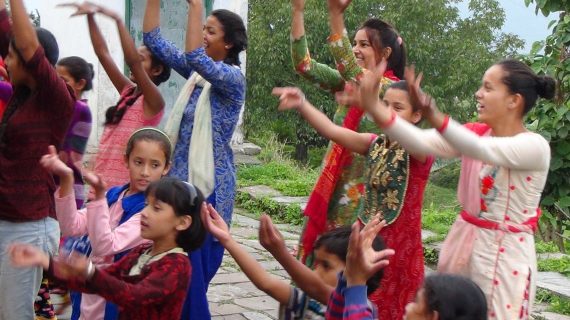
What we are seeing is that the educated youth would venture out from the communities and they would find certain employment. But the rest of the family would be here. And therefore, the lands would be fertile. Their traditions would continue. The festivals will happen, the deity…The resident deities of the landscapes would be offered prayers regularly. Now, if the whole families migrate out, then it is an even bigger question. How do we keep those lands productive?
Food systems used to be kind of the central pivot for a society. Most of the festivities, the ceremonies and the connectedness with the landscapes was around food systems. So just the economic answers may not be able to fulfil the needs. Although it may seem that economics may be at the root of beginning trying to bring a change. It appears that connecting to the roots, the identities of the place, the ancestral locations that we have. I think those are the kinds of bigger connects that will bring us in with a better comprehension of wholeness, that I would feel, not just by being myself a lot, but in a community and a community which is not just about neighbours, but it’s also about the trees and the forests and the water and the air and the mountains.
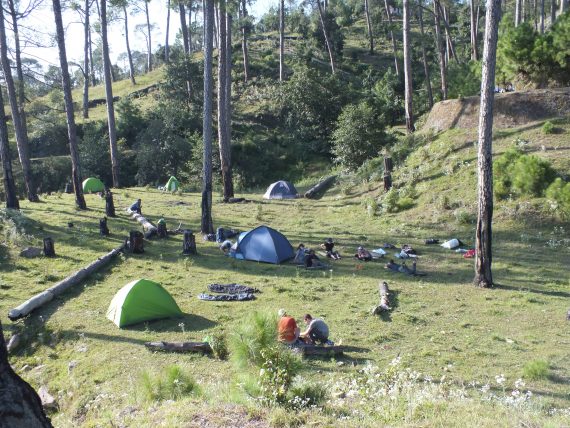
John: We ended our trek from much collie and Kausani and visited with Jay’s friend Deeraj runs B2R, you are as a company dedicated to keeping the youth in the mountains in the foothills of the Himalaya through having them serve banks and other industries through mass data analysis and double checking PDFs and things like that. And they take an incredible amount of pride, as Deeraj put it, in being participants in a global conversation in their little mountain town.
Would even Deeraj would say, you know, as proud as he is of that, he really wants to then have that transition into a more holistic connection with their place. He’s done it for 10 years. He’s employed three hundred mountain peoples, youth mainly. But for him, it’s half the battle to keep them in the town.
And the question is, what is the value of that life in that town? And how do you make that mountain life in itself whole? Rather than making it feel like a mini Delhi? And I think that’s where Ajay and the Foundation for the Contemplation of Nature really comes in. To connect people to the sacred value of the land they walk on through the dignity of work.
Yes. One should take great pride in being educated technically in this new economy and finding a voice in that economy by walking from the farm to Deeraj’s computer station. But how can one have the same level of dignity, if not more, from returning home and milking the cow or splitting wood, repairing that ancient stone wall, repairing that ancient stone temple?
I think the dignity of work and the dignity of mountain work must merge with bringing opportunities to mountain communities, and there’s something in that bridge that’s necessary.
SOUND: BELL
On renewal
John: I think a lot of what this conversation is about is about renewal.
When we talk about renewal. We’re talking about anything from ecosystems capacity to renew itself, to certain cultural practices, renewing themselves, to keeping and having that spiritual renewal in the face of a collapse of a way of life.
And, thinking about, you know, beyond the Himalayas, where, by the way, the infrastructure for that kind of connection with renewing cultural and social and ecological systems that are traditional, that infrastructure is still there. Whereas the United States is being rebuilt, in a lot of cases we’re seeing audit growth in farmers markets, we’re seeing a lot of backyard gardens. There’s a really inspirational place in Chicago called Eden Place, where the south side, where the predominantly African-American community that had hardly lead contaminated soil has renewed that land by cleaning up the soils, turning into community gardens, and then renewing that confidence, in being a land based people, after their ancestors left the south because of what happened on the land.
So, it’s not just a renewal of lead contaminated soil. It’s also a renewal of the spirit of a people who are traumatized by land itself. And so, I think we’re starting to see renewal come together and all of these ways. Renewal from cultural trauma. Renewal from ecological collapse.
Vandana Shiva talks about the living energies that are still embedded in the infrastructures of rural India, while fossil fuel driven infrastructures are coming in rapidly in food systems with pesticides and tractors and highways, systems and automobiles and industry.
She’s saying, you know, these living energies are still here and the energy of the cow, and the energy of compost, the energy of shared networks of labour, the energy of the sun, the rain. Those living energies are very much still in place. And her concern is if we shift fully into that fossil fuel infrastructure, a lot of carbon will be released in the atmosphere. Right, but you’ll also have that loss of renewal. People being displaced from their farms has led to a quarter million farmer suicides in this country in the last 20 years. Talk about the opposite of renewal.
I think a lot of this is about renewal, inner and outer resilience, and Brendan MacNamara, our colleague who developed this course with Ajay on inner and outer resilience. He’s adding this other form of capital that he’s calling spiritual capital. And I think for me, that’s not about making sure a certain religion is still followed, to me as being a spiritual being is simply being more than a body that consumes bodies in a global economy.
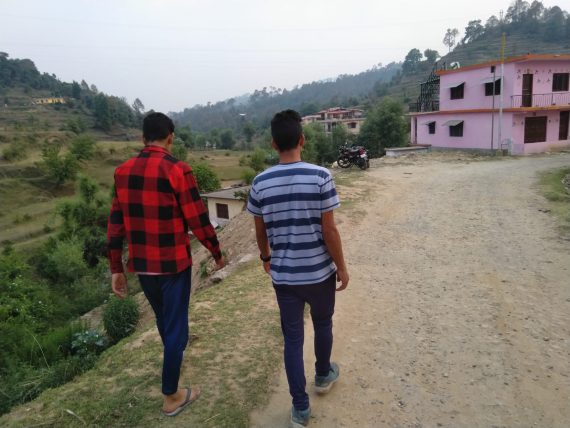
Inner resilience is a thing in itself that’s not taught enough. We have enough doom and gloom about, oh, the loss of the Ganges, and the loss of the Om glacier, and that kind of fear of loss is just not a sustainable fuel in that instead, we have to start talking about what are we going to gain? And if we see them in a reciprocal relational way, inner and outer resilience.
Maybe they keep each other alive rather than just, if we make people feel scared and guilty enough, maybe they’ll do some mindfulness exercises so they keep fighting against climate change and don’t burn out, then go on a mindfulness cruise, right Ajay?
SOUND: BELL
A young perspective
[Actually, on the track, my 8-year-old and 11 year old daughters joined us and you know, they understand the changes happening around them. They’re not that much younger than Greta Thunberg. And they have some clarity and some climate anxiety, and I just asked him on the track. I said, how is it fun? How is it more fun to fight climate change?
And one daughter said, Well. If we have a pretty yard with fun plants that attract butterflies, we’re not using gas to mow the lawn in the yards, more fun.
And I think my daughter was onto something there. There’s beauty, there’s fun, there’s creativity. We are talking about the core of our evolutionary species being. What are we, if not adaptive, creative being’s right? Karl Marx said we’re producers, which means we can imagine something in our mind and make it real in the world. That’s somewhere most human.
Why not view these climate solutions as playful, carnival last celebratory expressions of our evolutionary species being as adaptive and creative members of this blue ball flying through space?
The American middle class of the last three generations represents the first time in which private life has been more pleasurable than public life. And that’s very dangerous.
END
SOUND BRIDGE
CREDITS
SOUND: TANYA SUMMER GARDEN
TANYA:
Thank you for listening to this episode of Nordic By Nature, ON ETHICS.
You can find more information on our guests and a transcript of this podcast on imaginarylife.net/podcast
Please help us by sharing a link to this episode with the hashtag #tracesofnorth and follow us on Instagram @nordicbynaturepodcast. We are also fundraising on panteon.com/nordicbynature.
Many thanks also to Ajay Rastogi at the Foundation for the Contemplation of Nature. If you would like more information on Courses in Resilient Thinking for both students and professionals, please write directly to Ajay via foundnature.org.
You can also follow the Foundation for the Contemplation of Nature on Facebook, and at Contemplation of Nature on Instagram.
Thanks also to Dr. John Hausdoerffer. Dr. John has written and co-edited books on the intersection of environmental ethics and social justice including “Catlin’s Lament“; Wildness and his upcoming book What Kind of Ancestor Do You Want to Be?
He is also the founding Dean of the School of Environment & Sustainability and Director of the Master in Environmental Management (MEM) program at Western Colorado University. . He co-founded the Coldharbour Institute with Butch Clark on 350 acres of land east of Gunnison, Colorado, to exemplify sustainable mountain living in the Rockies. He also co-founded the Resilience Studies Consortium to unite environmental programs from liberal arts colleges across the world, so they can provide what he calls “multi-place, place-based education in hands-on, interdisciplinary “learning laboratories.”
You can find more information on Gunnison’s “Sister City International” partnership with the Himalayan community of Majkhali, on https://sistercities.org/
We’d love to hear your thoughts on our podcast, so please email me, Tanya, on nordicbynature@gmail.com
END



